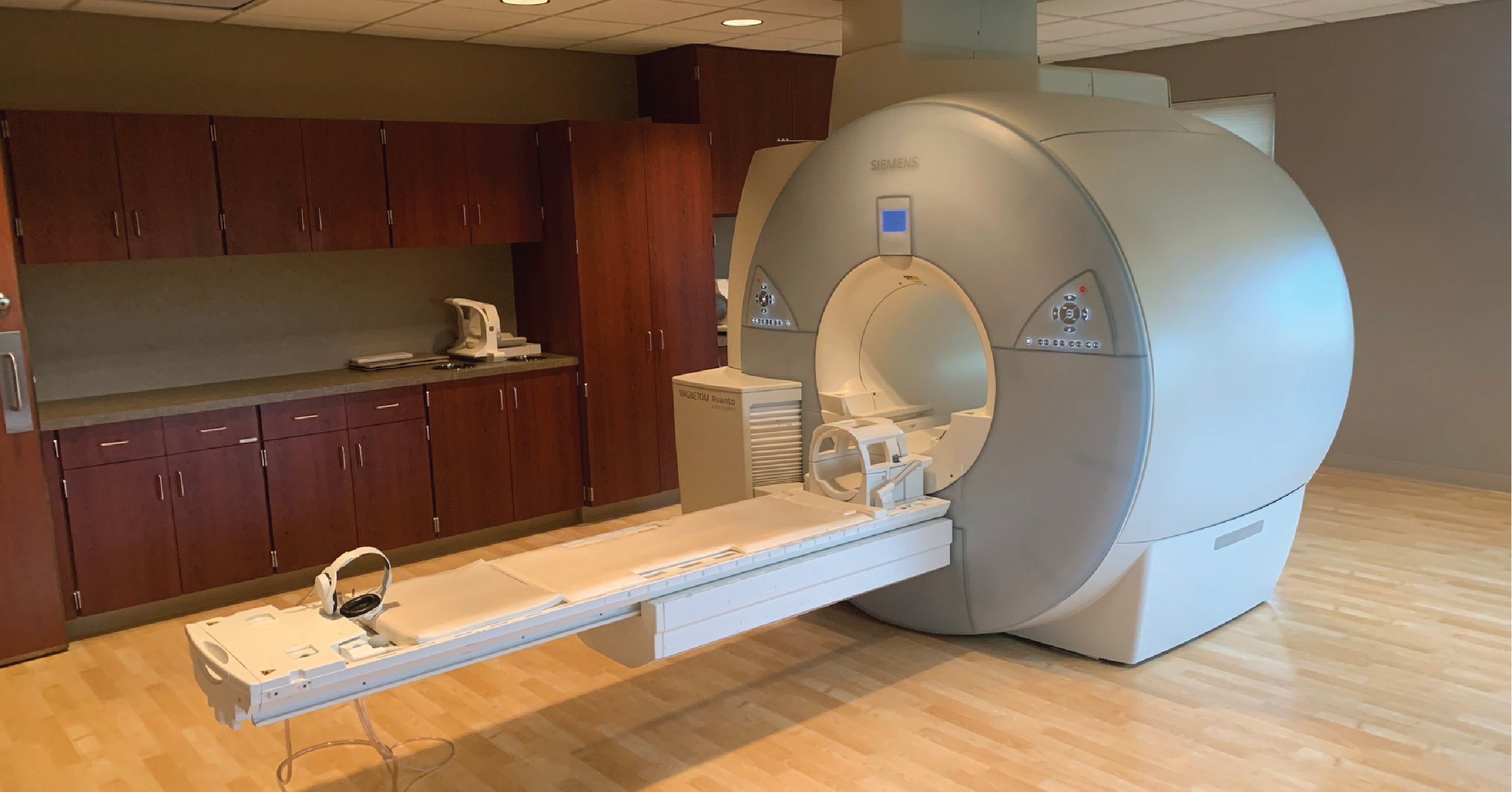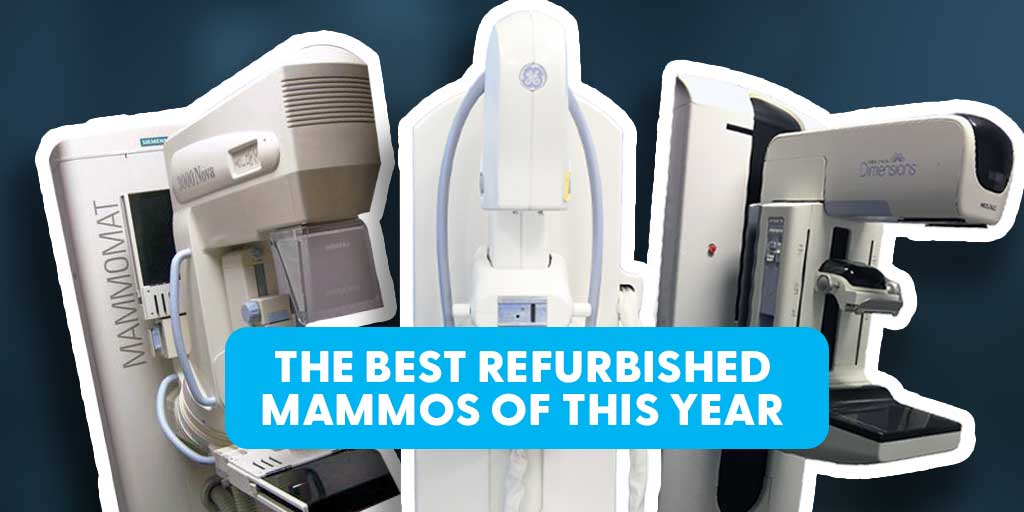![Top CT Scanners Compared [Manufacturers, Models, and More]](https://www.blockimaging.com/hubfs/CT-manufacturers.jpg)
Updated: December 1, 2025 : 5 min read
Top CT Scanners Compared [Manufacturers, Models, and More]
When it comes to CT scanners, the Google search results landscape can feel overwhelming, with bits and pieces of info from manufacturer pages, forums, and outdated blogs, but no one-stop-shop for all your CT questions.
The major players in the CT space are GE, Siemens, Toshiba (Canon), and Philips—all of which we carry at Block Imaging. Here’s a breakdown of each, based on what we’ve seen in real-world installs, repairs, and requests.
At Block Imaging, we've worked with thousands of facilities navigating the same challenges. Below we've distilled information on the top refurbished CTs. By the end of this guide, you'll have what you need to choose what CT can work best for your needs.
- GE CT Scanners
- Siemens CT Scanners
- Toshiba CT Scanners
- Philips CT Scanners
- Top CTs Sold at Block Imaging
- CT Price Tiers (Slice Counts, Models, Use Cases)
- Top 10 Questions to Ask Before Buying A CT
GE CT Scanners
GE consistently lands in the top spot—and for good reason. They’re cost-effective to service, relatively easy to work on, and parts are widely available. Plus, most GE models are air-cooled, meaning you won’t need a chiller.
Pros:
-
Lower service costs
-
Not locked down by the OEM, and so are easier to service
-
More used parts available
-
Smaller footprint
-
More secondary tube options (for savings)
Cons:
- Limited innovation in the 16-slice category
- Some newer low-end models (like Brivo/ACT) never received FDA approval
- Advanced features limited in older models
Top GE CT Models:
Optima 660 / Revolution EVO: 64/128 slices, feature-rich, strong resale market. Newer versions can come with advanced features like Metal Artifact Reduction. This likely to be the most popular system on the secondhand market over the next 10 years.
LightSpeed VCT 64: A very practical solution for a 64 slice. Probably the best for a entry level of the 64 slice world.
Optima 540 / BrightSpeed Pro: Most popular higher end 16 Slice CT Scanner. Best for moderate patient volume (6.3 MHU tubes)
Optima 520 / BrightSpeed Select: Entry-level, lower power needs, low service costs. Most popular 16 for someone looking for low cost of service. Tube is a 3.5 MHU, low cost to replace.
GE Revolution Maxima / 256: Cutting-edge but pricey and known for long downtimes early on
Siemens CT Scanners
Siemens usually ties with GE in popularity, especially when it comes to innovation. Their lineup offers everything from compact 16-slice systems to high-end dual-source scanners for advanced cardiac studies.
Pros:
- Strong technology and innovation
- Wide-bore options available
- Good image quality
- TIM (Total Imaging Matrix) makes full-body scanning easier
- Some models are air-cooled
Cons:
- Higher service costs
- Proprietary tubes = more expensive repairs
Top Siemens CT Models:
Definition Edge / Definition AS Series: Reliable workhorses for 64–128 slice range. Can be air- or water-cooled.
Flash / Force: Premium, dual-source scanners, great for cardiac (but pricey to service)
Perspective 64/128 – Air-cooled, small footprint, fits facilities with moderate patient volume
Emotion 16 / Scope / Perspective 16 – Affordable, but tube costs can be steep
Flash and Force (but also the most expensive to service) especially if your studies are mostly cardiac related.
Toshiba CT Scanners
Toshiba CTs are user-friendly, offer great image quality, and—like GE—don’t need a chiller thanks to their air-cooled design. That said, they’re not always the easiest systems to keep running.
Pros:
- Air-cooled
- Good image quality
- Simple interface
- Megacool 750D tubes have a solid track record
Cons:
- Higher likelihood of service calls
- Can be tricky to maintain
Top Toshiba CT Models:
Aquilion ONE (160/320/640 slices): Powerful, full-body coverage
Aquilion Prime 80/160: Mid- to high-tier options with good tube support
Activion 16: Older but still requested for entry-level CT needs
The Aquilion series all use a version of the Megacool, 750D tube, which has a good track record. There are also aftermarket options for other tube options.
Philips CT Scanners
Philips scanners are best known for their cardiac capabilities and long-lasting MRC tubes. These tubes are built to last 10+ years—way above the average 1–3 years from other OEMs.
Pros:
- MRC tubes can last a decade and is the most reliable tube
- Excellent for cardiac studies
Cons:
- Hard to service
- Limited third-party parts
- Systems often locked down by the OEM
Top Philips CT Models:
- Ingenuity/iCT (64/128/256): A leading model for cardiac studies.
- Brilliance 64: Haven't been manufactured in 15 years, but common on the refurbished market.
Top CT Scanners Sold at Block Imaging
Here's what we've seen the most requests for in the past two years.
CT Price Tiers (Slice Counts, Models, Use Cases)
Slices are the number of rows of detectors in the z-axis of a CT scanner. Counts ranges are 16, 32, 128, 256, 320, and 640.
The higher the slice count, the higher the price, up-front costs, and service costs. For typical price ranges on CT scanners and slice counts, check out our 2025 CT Scanner Price Guide.
Entry-Level (16–64 Slice)
An entry-level CT scanner will provide basic CT scanning, with the benefit of a lower purchase price, ownership costs, and service costs. Slice counts for entry-level CT will range from 16- to 64-slice and may be the right fit for a local imaging center, or rural hospital who are looking to do basic scanning with a non-cardiac focus. 16-slice CTs are often recommended for critical access hospitals.
Examples:
- GE LightSpeed 16
- GE BrightSpeed 16
- GE Optima 520 / 540
Best for:
- Small hospitals or imaging centers
- Basic scanning
- Critical access hospitals
Intermediate (64 Slice)
This is the minimal slice needed for cardiac studies and is most popular for cardiac, and of course, can perform general purposes. Small to large metro hospitals could find what they need from an intermediate-level CT scanner.
Examples:
- GE LightSpeed VCT 64
- Toshiba Aquilion 64
- Philips Brilliance 64
Best for:
- Cardiac
- General purposes
Premium (128+ Slice)
In this category, we are looking at high-end 64- to 128-slice, that are feature-rich and more late-model CT scanners. In this tier, you will find clearer and more defined images, along with a wider array of imaging. Many facilities like these models for their faster speeds and workflow for high-volume or high-complexity environments. Example: scans of the entire heart or majority of the lungs.
Examples:
- GE Optima 660
- GE Discovery 750HD
- Toshiba Aquilion ONE
- Siemens Definition Force
Best for:
- Scans of the whole heart
- Studies of the majority of the lungs
Top 10 Questions to Ask Before Buying
These questions dig deeper into the fault lines between certain manufacturers, models, and slice counts. It is incredibly important to run through these factors as they can make a significant difference to the final price point.
- What's my budget and timeline?
- What are the most cost-effective options? Can I trade in my system?
- Is buying refurbished an option?
- What are my radiologists and techs familiar with?
- What studies will we do? And how many per day?
- What else will I need on this CT - cardiac software options? An injector?
- Can my facility handle a chiller if needed?
- What is the installation process?
- Do I have service options lined up? Do I know which CTs are easiest to service?
- How available are spare parts?
Additional Resources for your journey
As you can see, your budget, scan needs, and patient volume will play major factors when it comes to making a decision.
If you're looking for something cost-effective and reliable, GE’s 16-slice systems are tough to beat. If you want something more advanced with higher imaging capability, a 64- or 128-slice system from Siemens or Toshiba could meet those needs. And if you’re doing cardiac regularly, Philips could be a strong option—just make sure you’ve got a service option that works for those systems.
If you need any recommendations, don't hesitate to reach out to our team. Until then, check out our free CT Scanner Buyer's Guide for more resources.

Paul Crawford
Paul Crawford is the Vice President of Equipment Solutions at Block Imaging. Paul connects with healthcare facilities across the world to offer CT solutions and manages the wholesale sales team. When Paul is not helping customers with their CT needs, he enjoys spending time with his family, watching MSU sports, and CrossFit.







